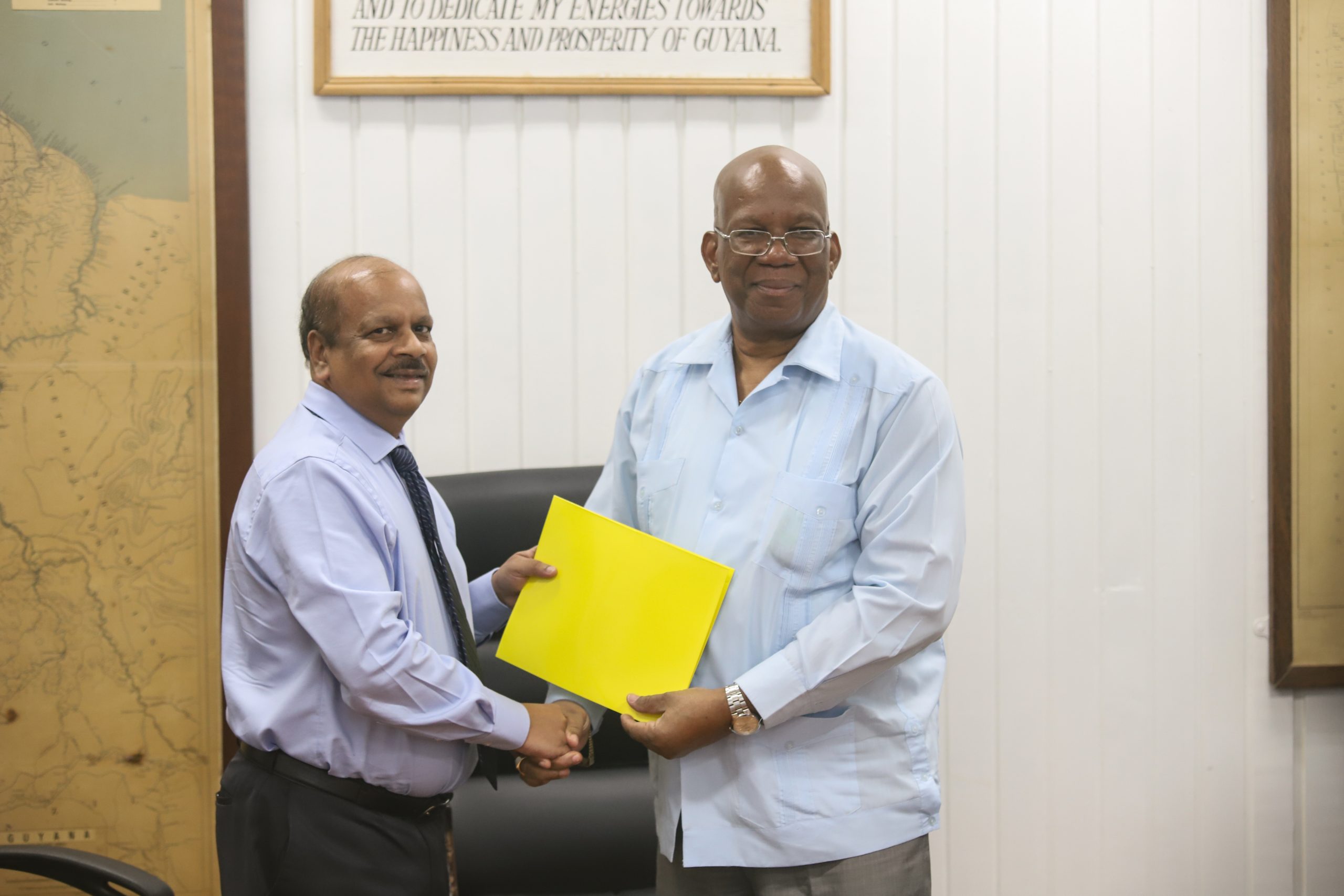
Governor of the Bank of Guyana Dr Gobind Ganga has defended the Federal Reserve System – the central banking system of the United States of America -as “the safest institution” to hold Guyana’s petroleum revenues.
It was recently disclosed that Guyana’s petroleum funds which are kept in the Natural Resources Fund (NRF) will be placed in the Federal Reserve Bank.
Dr Ganga said “that is one of the safest institutions you could ever deal with. It’s over 50 years we’ve been dealing with the Fed.”
He disclosed that Guyana approached the US Federal Reserve since 2017 to discuss the fund and other issues. According to Dr Ganga, the due diligence which precedes the transferal of the funds will be completed shortly.
The due diligence will include assurance from Guyana to the Federal Bank about the credibility of the fund and how much can be expected on a monthly basis.
“It will be AML/CFT (Anti-Money Laundering and Countering Financing of Terrorism) kinds of issues,” Dr Ganga said.
The funds will be earning different interest rates as it increases. Minister of Finance, Winston Jordan said: “the aim is an average of 3% over time.”
He blasted the media for reporting on the matter without fully reading the Natural Resources Fund bill which was passed in the National Assembly in 2018.
“All of the reserves of the Bank of Guyana are not held in the Bank of Guyana, they are held in offline in the Federal Reserve. If they were held in the bank of Guyana, they will never earn a cent interest,” the Finance Minister said.
The Government invested the US$18M signing bonus from ExxonMobil in the United States and Canadian bonds.
The Central Bank Governor on Wednesday signed an agreement with the Ministry of Finance to operationalise the NRF ahead of first oil. The Memorandum of Understanding deals with the effective day to day management of the fund.
“It is one more piece of evidence of our unremitting drive to bring transparency and accountability to this fund,” the Minister said.
ExxonMobil has not given the Government a date for the production of oil to begin this month.
The Bank of Guyana is responsible for the management of the fund including receiving and accounting for all deposits into the NRF, investing the NRF In eligible asset classes, reporting on the performance of the NRF on a monthly, quarterly and annual basis and providing the public with information on the NRF as required by law, among others.
In preparation for its role as operational manager of the NRF, the Bank of Guyana has begun to build additional capacity supported by the World Bank’s Reserves Advisory and Management Programme (RAMP), with whom an agreement was signed on October 1, 2019, according to the Ministry of Finance.
According to the bill governing the fund, the governor and other officials will face penalties for acts of omission or negligence.
The Natural Resources Fund Act also provides for the appointment of three committees to manage the revenues. Those committees are the Macro-economic committee, the oversight committee and the investment committee.
The committees have not yet been appointed according to Minister of Finance who told the media that the ministry is working on a shortlist of names of persons to be appointed to the Macro-economic committee and the Investment Committee as well as remuneration for the committee members.
As of now, the oversight committee has not been established since the opposition and the private sector are yet to name representatives.
But the Minister said this does not affect the work of the others.
The oversight committee comprises of 22 members inclusive of representatives from the Opposition, PSC, Transparency Institute of Guyana, the Guyana Press Association, trade unions, a nominee from each of the ten Regional Democratic Councils and various civil society organisations.
Other than the oversight body, the National Assembly’s approval is needed to spend the monies accumulated in the fund.
The Minister expects oil revenue to start coming in until the third month of oil production.






